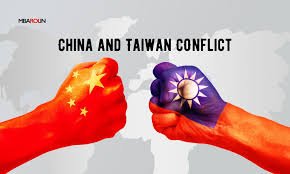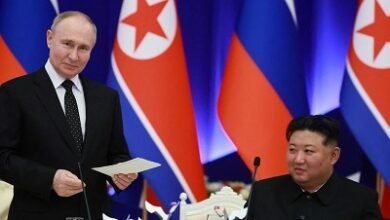
WAR-REPORT:-Fear that the People’s Republic of China (PRC) will invade Taiwan and draw the US into a massive war in the Pacific has for many years driven an increasing American focus on preparing for conflict with the PRC. The expansion of PRC military capabilities and Beijing’s announcement of military expansion milestones in 2027 have intensified those fears and sparked intense debates about America’s potential role in and readiness for deterring and defeating a PRC invasion.

Concerns about America’s ability to defend Taiwan are valid and important because US interests would be severely damaged by the PRC’s conquest of the island. Taiwan is strategically vital to the larger US-led coalition to contain the PRC: A US-friendly Taiwan links America’s allies in the northwestern Pacific with US partners and allies to the south, whereas a PRC-controlled Taiwan would become a springboard for further PRC aggression and would seriously compromise the US-led coalition’s ability to operate cohesively.

Yet the US and its regional allies and partners still lack a clear strategy for defending Taiwan, despite increasingly articulating the importance of preserving Taiwanese autonomy. Worse still, discussions in the US about Taiwan’s defense have focused almost exclusively on deterring or defeating a PRC invasion and have largely ignored the likelier scenario, elements of which are already underway: a PRC coercion campaign that remains far short of invasion but nevertheless brings Taiwan under Beijing’s control. The US and its partners must step back from the narrowing focus on a single dangerous scenario to reevaluate the full threat the PRC poses and develop a coherent set of strategies to defeat all aspects of that threat.

Strategic debates in the US about Taiwan’s defense have largely centered on how to prevent the PRC from invading and annexing the island. These debates have become especially salient as the Taiwanese people’s unwillingness to join the PRC voluntarily grows and becomes increasingly obvious. The determination of Taiwan’s people to retain their autonomy will encourage PRC leaders to choose more coercive paths to gain control of the island, up to and including invasion and occupation. The US and its allies must certainly prepare for the possibility of a PRC invasion, but they must also prepare for alternative PRC hybrid warfare and coercion strategies.

Our project recognized this significant gap in US strategic thought and has sought to examine whether such PRC short-of-war coercive approaches could cause Taiwan to capitulate to PRC demands absent an invasion or full-scale military blockade. We have developed a realistic approach the PRC could use to coerce Taiwan into a political settlement favorable to the PRC without invading and occupying the island. We refer to this comprehensive political-military campaign as the short-of-war coercion course of action (SoWC COA).

The COA presented in this report is a set of coordinated actions the PRC could pursue to convince Taiwan and its international partners to accept Chinese demands by means short of war. The Coalition Defense of Taiwan project, a joint effort between the American Enterprise Institute and the Institute for the Study of War, developed this COA through a yearlong planning exercise based on extensive research into PRC strategic thinking on political warfare, military operations, and hybrid warfare, as well as detailed studies of previous and ongoing PRC coercion campaigns against Taiwan and other states. This research enabled us to develop a COA that closely aligns with PRC grand-strategic objectives while minimizing negative domestic impacts for the PRC. We endeavored to place ourselves in the shoes of Chinese strategic planners tasked with bringing about the PRC’s unification with Taiwan without provoking a major conflict.
The COA defines the PRC’s primary problem as the PRC does—the continued resistance to unification by ardent Taiwanese “separatists” who maintain Taiwan’s de facto independence and are buoyed by support from foreign powers, namely the US and its regional allies. This COA therefore seeks to set conditions in Taiwan to forcibly remove these “separatist” elements and transfer power to political figures who will accede to PRC demands in the form of a cross-Strait peace agreement. These conditions will be achieved by executing an “Anti-Separatism Campaign” that gradually intensifies over four years until it causes near-complete isolation of Taiwan while using the threat of further escalation combined with economic incentives and information operations to deter intervention by Japan, the US, and other regional actors.
The SoWC COA begins after a new Republic of China (ROC) government takes power in May 2024 and continues until the PRC and Taiwan reach a “peace” agreement sometime before, or shortly after, 2028. The COA groups PRC activities into four “pulses” that include coordinated actions in the air, sea, information, cyber, economic, cognitive, and other domains. The extended time frame and coordination of many different kinds of activities against many different targets allows PRC planners to obscure the larger unification campaign that each set of actions actually serves.

The COA’s success depends in considerable part on the failure of its targets even to recognize its existence as a coherent undertaking. By consistently increasing pressure and intensifying baseline coercive activity, the PRC aims to make life in Taiwan increasingly unbearable until critical sectors of the Taiwanese polity view accepting a PRC-proposed “peace process” as preferable to continued resistance.
The COA attacks four centers of gravity that currently provide the ROC government and Taiwanese people with the strength to resist PRC coercion.








